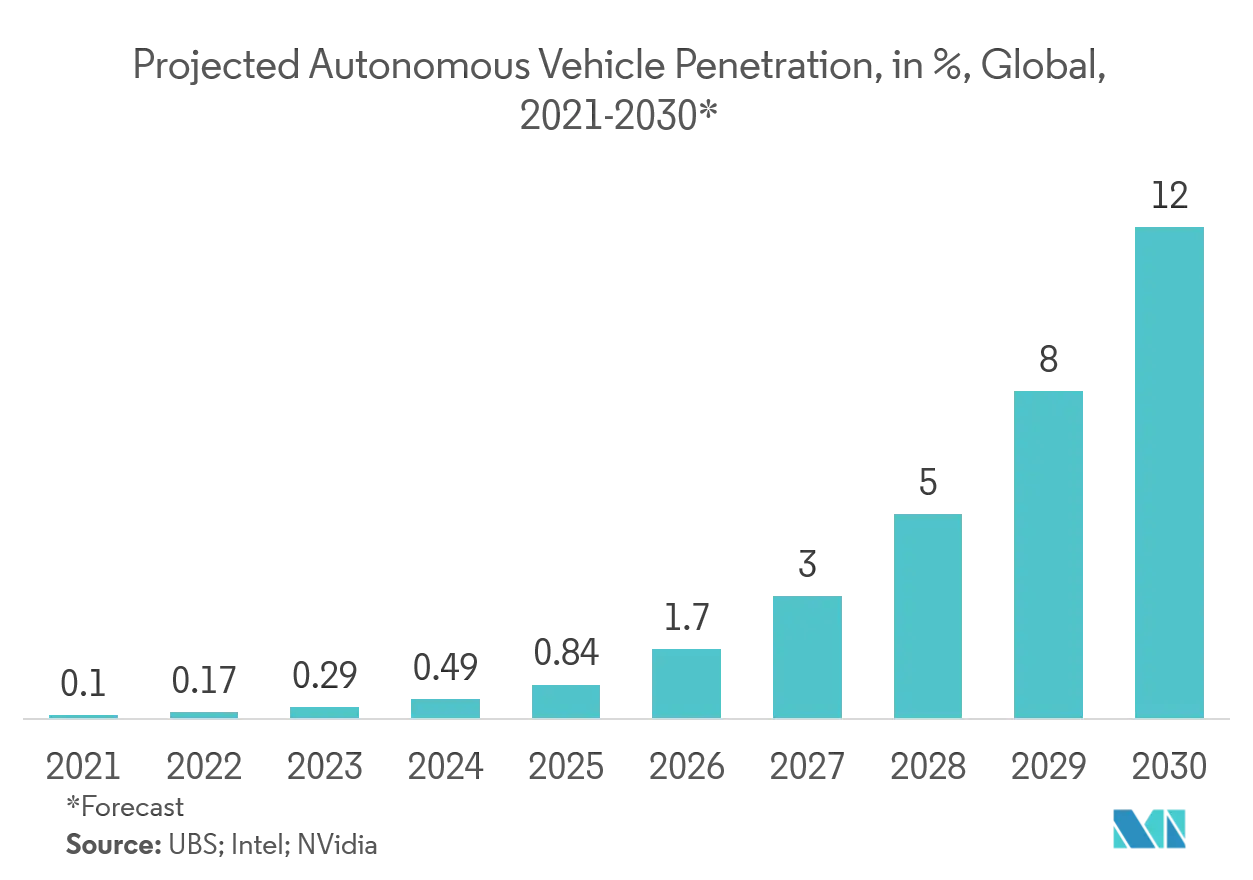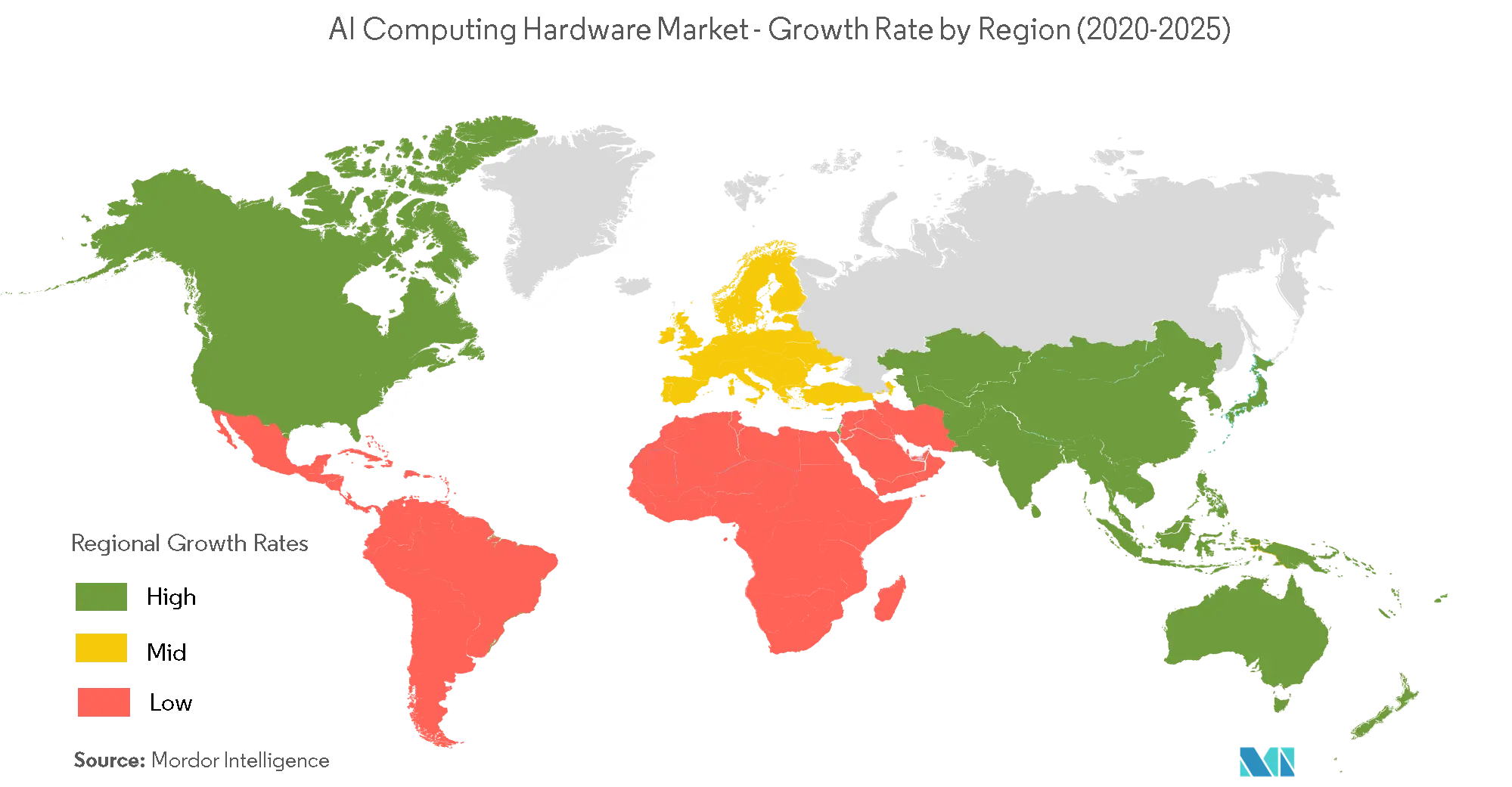Market Trends of AI Computing Hardware Industry
Automotive Sector to Witness Significant Growth
- The automotive industry is going through a decade of rapid changes, as vehicles become more connected, new propulsion systems, such as electric motors, reach the mainstream, and the level of vehicle autonomy rises. Many car makers have already responded by announcing pilot projects in autonomous driving, which may need AI computing hardware.
- For instance, NVIDIA DRIVE AGX self-driving compute platforms are built on NVIDIA Xavier, the world's first processor designed for autonomous driving. The auto-grade Xavier system-on-a-chip (SoC) is in production, and it is architected for safety, incorporating six different types of processors to run redundant and diverse algorithms for AI, sensor processing, mapping, and driving.
- Further, Xpeng P7 is the first L3 autonomy-ready production vehicle in the Chinese market, powered by NVIDIA's DRIVE AGX Xavier system-on-a-chip, delivering 30 TOPS (trillions of operations per second) performance while consuming only 30 Watts of power. Its autonomous driving system, XPILOT3.0, is made for China's challenging roads. It contains 12 ultrasonic sensors, five millimeter-wave radars, 14 cameras, and the industry's only 360° multi-perception integrated system.
- Further, in April 2020, the autonomous vehicle startup, Phantom AI, raised USD 22 million ina Series A financing led by Celeres Investments and joined by the US automaker, Ford Motor Co., and KT, South Korea's largest telecommunications company. Phantom AI focuses on including computer vision, sensor fusion, and control capabilities in its solutions and accelerate its production globally.
- Furthermore, players are focusing on the next generation of intelligent viewing platforms for surround-view visualization, driver monitoring stand-alone vision processing, and e-mirror solutions. In April 2020, Ambarella announced the CV22FS and CV2FS automotive camera SoCs, with AI processing and ASIL-B compliance, in order to enable safety-related applications.
- Moreover, combined with processor-integrated support for artificial intelligence and neural networks, COTS (commercial-off-the-shelf platform) offers everything developers need for smart vision systems. In February 2020, Congatec expanded a 3.5-inch offering to NXP i.MX8 processors. The new conga-SMC1 3.5-inch board not only features a SMARC socket for scalable processor performance, but it is also optimized for MIPI cameras, which can now be connected directly and without any additional hardware and can be used for situational awareness in autonomous vehicles.

Asia-Pacific to Register the Fastest Growth Rate
- Asia-Pacific is expected to register a significant growth rate due to advancements in AI technology in countries, such as China and Japan, where players are focused on integrating computing hardware in the devices through partnerships.
- In April 2020, the Chinese AI chip maker, Intellifusion, completed a pre-IPO round of financing of nearly CNY 1 billion (USD 141 million), led by Utrust VC, Forebright Capital, and its existing investor, Walden International. Intellifusion focuses on the field of visual intelligence. Its chip platform, Moss, recently launched the second-generation artificial intelligence chip, DeepEye1000, which is a heterogeneous multi-core visual analysis SoC with a custom instruction set neural network processor embedded.
- The unit performance of DeepEye1000 increased by 20 times and the unit energy efficiency increased by 100 times, with system delay reducing by 200 times. It can be applied in the intelligent security, new business, intelligent transportation, intelligent manufacturing, intelligent storage, intelligent home, robot, intelligent supercomputing, and other industries. This further supports the market growth.
- In August 2019, Huawei announced Ascend 910, its AI processor for data training, and its AI computing framework, MindSpore. The processor delivers 256 TeraFLOPS for half-precision floating points (FP16) and 512 TeraFLOPS for integer precision calculations (INT8), respectively. Further, Huawei plans to develop Atlas and MDC products based on Ascend processors, which can be provided to universities and other partners in India, as they develop applications to address industry-specific challenges. This may further boost the market growth in the future in India and China.
- Further, today’s edge computing devices are based on conventional, general-purpose GPUs. These processors are not generally capable of supporting the growing demand for AI-based processing requirements, such as image recognition and analysis, which need larger devices at a higher cost due to increases in power consumption and heat generation. Such devices and their limited performance are not desirable for state-of-the-art AI processing.
- To address such issues, in March 2020, Socionext Inc. developed a prototype chip that incorporates newly developed quantized Deep Neural Network (DNN) technology, enabling highly advanced AI processing for small and low-power edge computing devices. The prototype is a part of a research project on “Updatable and Low Power AI-Edge LSI Technology Development”, commissioned by the New Energy and Industrial Technology Development Organization (NEDO) of Japan. Further implemented, this may enable significant growth to the market.



